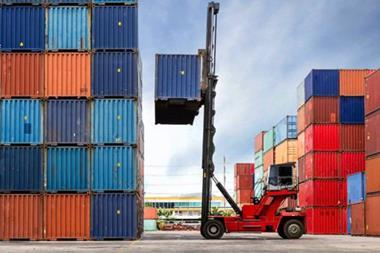Germany’s demand for parametric insurance is growing, but its benefits extend beyond weather-related events, writes Thomas Keist, Innovative Risk Solutions director; and
From the internet of things (IoT) to automation, sensors to artificial intelligence (AI), big data to smart data, the world of business has never been more technically advanced.

homas Keist, Innovative Risk Solutions director, Swiss Re Corporate Solutions
Antiquated systems and supply chains are being digitalised, manufacturing and production sites are fast-becoming automated factories, and microchip sensors are beginning to predict maintenance and potential faults before they happen.
All this technology is generating so much data – smart data – which can provide deep insight into the next big risk event. And insurers are placing this data at the heart of their innovative risk solutions, making their partners more resilient against diverse risks, such as climate, weather and nat cat events.
Take the high-profile case of Germany’s Rhine river, as an example of how technology and, most notably, big data can be used to predict and cover losses.
In 2018, one of Europe’s most important shipping routes – a river of more than 800 miles stretching through the continent’s key industrial’s zones (through which hundreds of millions of cargo is transported each year) – became impassable for marine transportation.
A heatwave across Europe had caused water levels in the Rhine to recede so significantly that supply chains were severely disrupted, causing costly business interruption as production came to a halt. In fact, low waters cost one global chemicals company €250 million in losses.
With huge sums at stake, many industries – shipping and manufacturing companies in Germany in particular – are proactively seeking more innovative mitigation options to protect against the increasing threat of low and fluctuating river water.
This is where technology and data form a significant part of the solution. Gauges along rivers provide a clear, external and independent indication of water levels. Coupled with the historical data from these gauges, this information can be modelled into an insurance trigger formula to create a bespoke parametric insurance solution.
The independent data produced by the gauges is matched against predefined trigger formulas – triggers created and defined in collaboration with the client – to determine when a payment should be made and how much.

Bijan Daftari, country manager, Germany, Swiss Re Corporate Solutions
There are three main benefits:
- First, parametric insurance is a more simplified and streamlined version of traditional insurance in that fixed payments are made if measured data (e.g. water levels) meets or exceed critical thresholds. Parametric insurance focuses on the incident and not the actual loss – it is the event that triggers the coverage.
- Second is fast claims payment. Under a traditional insurance policy, business interruption (BI) claims can take months and sometimes years to settle, because losses must be investigated and confirmed before a settlement is agreed. Parametric insurance reduces the steps to claims payment. There is no longer a need to conduct site visits, forensic investigations, and loss adjustments, before a claim is paid. If an incident occurs, a payment is paid in a matter of days, without hesitation.
- Third is indemnification security. There are often ambiguities with traditional insurance policies: you are not always sure what the coverage will pay until after a loss situation has been investigated. Amounts may also come under dispute. Parametric insurance removes these ambiguities because any pay-out is pre-agreed and therefore fixed.
Indeed, demand for parametric insurance in Germany has grown substantially following the 2018 drought and low water levels in the Rhine. Earlier this year, Swiss Re Corporate Solutions closed a parametric deal with a Rhine river cruise company. And while the solution is typically applied to weather-related events – enhancing climate risk resilience – we are beginning to discuss how we can apply the principle of parametric insurance to other risks.
AI, the IoT, sensors, automation – all these technologies are generating so much data on all risks within all industries – from machinery breakdown to non-damage BI incidents – that it is only a matter of time before sensor data triggers are being agreed for risks beyond weather and nat cat events.
As long as we can ensure that the data remains objective, independent and reliable, we can develop parametric insurance for many more complex risk situations of industries.
The future for parametric insurance is very bright indeed.
This article was sponsored by





















No comments yet